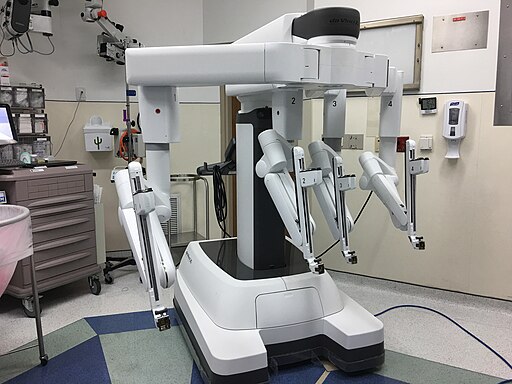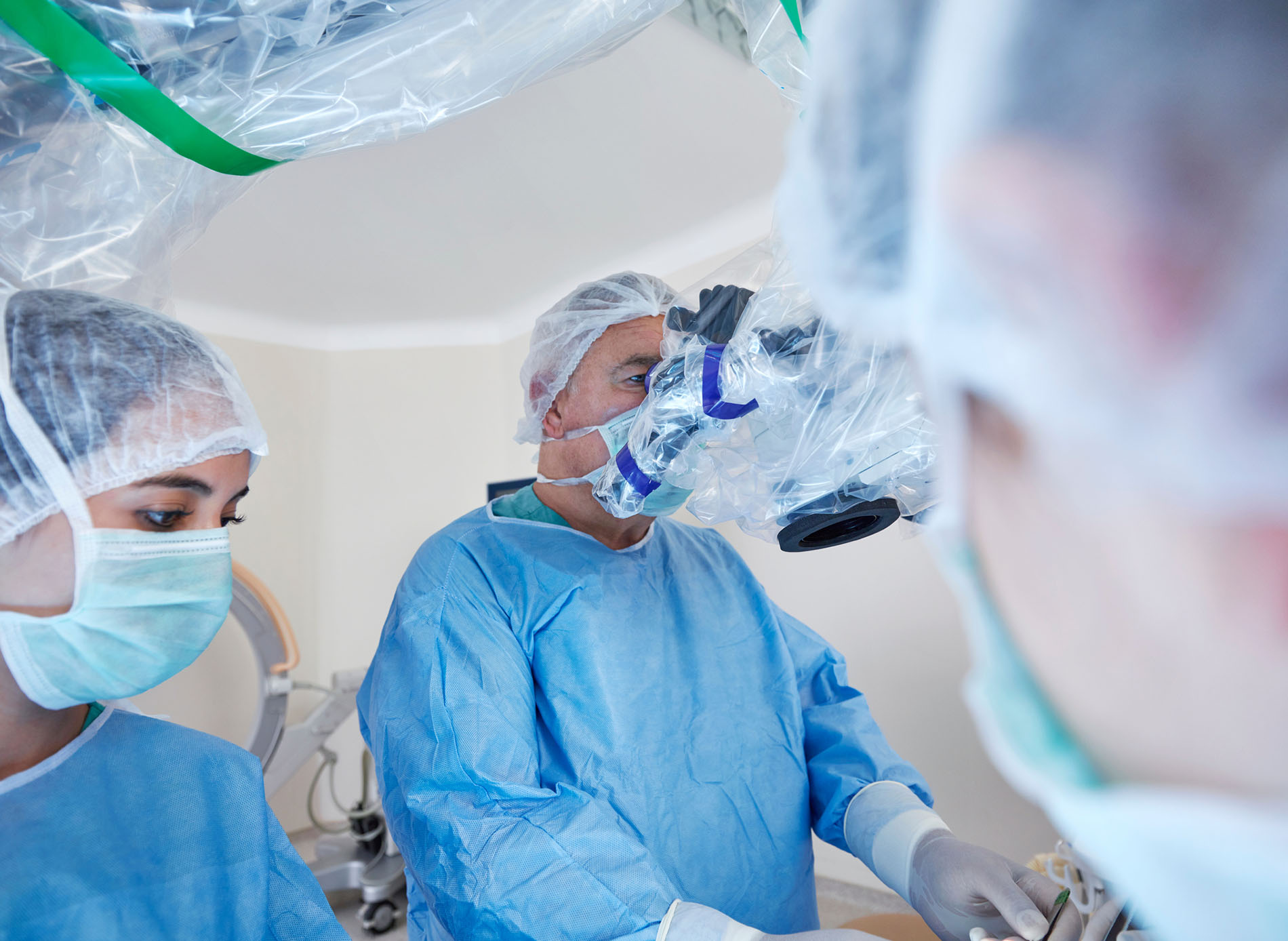When you go in for any medical procedure, you want to meet your doctors, nurses, anesthesiologist, and anyone on your team who will provide care. After all, you are in their hands. At WMCHealth, you can have confidence being in those hands—we have some of the top surgeons in the region providing expert care and performing highly complex procedures, including transplants, brain surgery, and more.
But there are some other team members we’d like you to meet. They’re among the most sought-after, precise, and successful surgical assistants in the world: our robots.
Traditional vs. Minimally Invasive Surgery
In traditional surgery, a surgeon uses handheld instruments through a large incision. Minimally invasive techniques only require a few small incisions, and the surgeon uses advanced technological tools to perform the procedure.
“Robotic surgery systems help surgeons perform major and invasive procedures that were once considered highly risky with faster recovery times, less scarring, and fewer complications,” said Steven Lansman, MD, Director for the Department of Surgery at Westchester Medical Center. “We use some of the most advanced robotic techniques for minimally invasive surgery across a variety of disciplines.”

While these tools have propelled surgical capabilities to new heights, it’s important to remember that robots are used as assistants. The robotic device is controlled by the surgeon and does not perform the operation by itself.
Robot-assisted Surgical Tools Used at WMCHealth
WMCHealth has consistently employed the latest technologies and advancements to provide its patients with the most optimal care available. WMCHealth offers an extensive list of minimally invasive procedures in almost every department of medicine, and numerous robotic systems and devices make this possible. Let us introduce you to a few.
Da Vinci Surgical System
At WMCHealth, the Da Vinci Surgical system is used for minimally invasive surgeries in a wide variety of medical fields, including:

“The robotic platform greatly enhances your surgeon’s surgical skills by using small ports and arms to perform surgical tasks,” explains Mitchell Fraiman, MD. “Robotic surgery reduces pain, blood loss, scarring, and hospital stays while allowing greater precision, dexterity, visualization, and access to hard-to-reach areas.”
The surgeon controls the Da Vinci system while seated at a surgical console that allows them to access all the technology the system provides at once while remaining comfortable, minimizing their fatigue during the surgical procedure.
Orthopedic Robots
According to the American College of Rheumatology, almost 800,000 people in the U.S. undergo a knee replacement every year, and more than half a million have hip replacements, making joint replacements some of the most common surgeries. These numbers are expected to rise as the population ages.
“Hip and knee replacements are major surgeries and are recommended only after non-surgical treatments have failed. But two robotic systems at WMCHealth are helping to lower risks and help people regain mobility and independence,” says William O. Thompson, MD, orthopedic surgeon at MidHudson Regional Hospital.
Mako: The Mako system offers three phases of help to orthopedic surgeons.
- Model. The Mako system can use a CT scan of a joint to produce a 3D model. This allows your surgeon to evaluate and understand the unique bone structure and determine the severity of disease or injury.
- Plan. A surgeon can use the model to create a personalized surgery plan based on the patient’s specific needs.
- Robotic assistance. During the surgery, Mako’s robotic arm helps the surgeon make minimal cuts and preserves as much healthy bone and tissue as possible.
ROSA
While the Mako system can be used for knee or hip replacements, the ROSA system is a specialized system for total knee replacements. Similar to Mako, the ROSA knee system provides:
- Scans for modeling. Using a series of X-rays, the ROSA system creates a 3D model of the knee. This method provides less exposure to radiation compared to a CT scan-based system.
- Precision prep. The model enables the surgeon to create a surgical plan that fits the patient’s anatomy and specific circumstances.
- Data-driven assistance. During the replacement, the ROSA system uses a camera and optical trackers to ensure the implant is positioned precisely.
Transcranial Doppler
The Transcranial Doppler system provides real-time information on cerebral blood flow. This is highly valuable because time is of the absolute essence when it comes to stroke, hemorrhages, aneurysms, or any other blood flow issue in the brain.
The automatic tracking system ensures that the head stays in a stable position while the device finds the best doppler signal for faster and more accurate results.
This system is also:
- Portable
- Non-invasive
- Radiation-free
iotaSOFT Insertion System
Millions of people experience severe or profound hearing loss. The cochlear implant is a highly successful device that has provided deaf children and adults the ability to hear and speak better. The iotaSOFT Insertion System is a robot-assisted implantation technology that allows for a slower, more controlled insertion of the cochlear implant electrode than manual methods.
The decrease in this insertion variability reduces the risk of additional hearing loss and increases the potential to preserve residual hearing and improve the outcomes of the cochlear implant itself.
This technology is available for both pediatric and adult patients.
Robot-assisted Spine Surgery
Traditionally, spine surgery has relied upon a surgeon’s ability to use handheld instruments and the preoperative imaging to guide them through the operation. Some were aided by 2D X-rays, which provided additional minimal guidance.
The rapid expansion of technology in the medical field now provides 3D modeling of the spine. This allows the surgeon to see the anatomy and condition of the spine from many different viewpoints. It even allows the surgeon to plan the surgery according to the model and rehearse the procedure prior to coming to the operating room.
In addition to 3D modeling, robotic assistance reduces the mental and physical fatigue for the surgeon during long and delicate operations, potentially improving safety and accuracy. Robotic assistance can be used in nearly all types of spine surgeries, allowing surgeons to tackle tougher cases with better outcomes.
Our commitment to advanced and highly innovative care means that we aim to provide patients with the treatment and relief they need with as little pain, scarring, and risk as possible.
“Robots have not replaced the highly skilled and experienced surgeons who perform life-saving work at WMCHealth every day,” says Merritt Kinon, MD, Section Chief of Spinal Neurosurgery at Westchester Medical Center. “But with the enhanced vision, mobility, stamina, and precision they provide, they are an invaluable part of our team.”
Now available at Good Samaritan Hospital: the HYDROS™ Robotic System, an advanced AI-powered platform for Aquablation® therapy — a minimally invasive treatment for benign prostatic hyperplasia (BPH), or enlarged prostate. This next-generation system combines real-time imaging with robotic precision to offer long-lasting symptom relief while preserving sexual function and continence. For more information or to book an appointment with a physician, call: 845-777-3569
VISIT UROLOGY